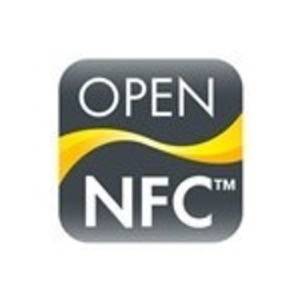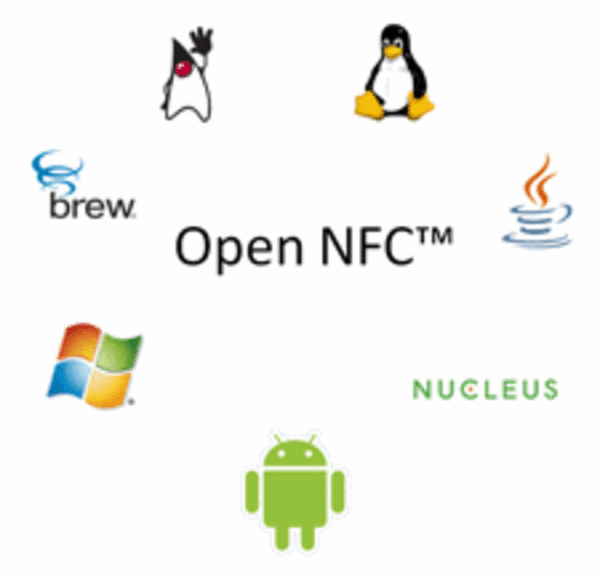Semiconductor solutions provider Inside Secure has released an open source NFC protocol stack for Android 2.3, code-named “Gingerbread,” which it will provide to chip vendors, smartphone manufacturers, wireless carriers and software developers for free. The stack, called Open NFC, is the first hardware-independent implementation of NFC (near field communication) for Google’s Android mobile operating system.

Prior to this launch, Android’s support for NFC code would only work with NFC chips from the vendor NXP Semiconducters. With Open NFC, however, different NFC chips can be used in Android phones, with less effort than would have been required before.
Why Open NFC?
Explains Philippe Martineau, executive vice president of the NFC business line for Inside Secure, “Open NFC relies on a separate, very thin and easily adaptable hardware abstraction software layer, which accounts for a very small percentage of the total stack code, meaning that the Open NFC software stack can be easily leveraged for different NFC chip hardware.”
“This has tremendous cost, time-to-market and flexibility advantages for NFC chip vendors, smartphone manufacturers and software developers who would otherwise have to contend with rewriting the hardware-specific elements of the Gingerbread NFC protocol stack,” he said.

What he means is that, without something like Open NFC, any smartphone manufacturer that wanted to build phones using chips from another company besides NXP would have had to rewrite a substantial portion of the code found in the Android OS to allow the stack to work with a different NFC controller or combo connectivity chip.
What Else Open NFC Does
The code referencing the NXP hardware is not confined to a thin hardware-specific layer, Martineau said, but is found throughout the stack. With Open NFC’s hardware abstraction layer, however, adapting that stack to new hardware is much simpler.
Open NFC itself is not new – it was introduced last year. This is just the first time it has been ported to Android. The Android version of the stack includes the ability to both read and write tags and it supports peer-to-peer communications, Bluetooth and Wi-Fi pairing, interactions with single-wire protocol SIMs and other secure elements and is compatible with smart cards and RFID tags.
The stack is also available for WinCE 6.0, Windows Phone 7, Linux 2.6, MeeGo and other mobile platforms in addition to Android. The software download will be available for Android 2.3/2.4 via Inside Secure’s website at the end of the month. It’s free and open-sourced under the Apache License. Developer documentation is available here.
Why NFC Matters
NFC, a short-range wireless communications technology, has been widely used in other parts of the world, especially in regions within Europe and Asia, but has not yet caught on in North America. But with the launch of Android 2.3 and the newest Google Android flagship phone, the Nexus S, NFC support is built right in.

The technology forms the basis for upcoming mobile payments platforms which would allow you to wave your phone at a device at the point of sale in order to make a purchase – no credit cards required. Google is working on a mobile payments service of its own, which would tie together several of its products, including Google Places, Hotpot (local business recommendations) and, of course, Android. Both Apple and RIM have plans for NFC in their phones, too, although less is known about their particular initiatives.
More importantly, three of the four leading U.S. mobile operators – AT&T, Verizon Wireless and T-Mobile, have teamed up on a mobile payments service called Isis which will utilize NFC technology. The service will be rolled out over the next 18 months in key markets, says the group.
And other startups are taking advantage of NFC as well. For example, person-to-person mobile payments company mPayy interfaces with NFC technology in its mobile payment services for public transit and brick and mortar retailers. Another startup, Bling Nation, is offering stickers that NFC-enable phones that don’t include the necessary hardware.
Forrester research analysts pegged NFC as one of the top mobile trends for 2011, saying that in some regions in the U.S. where NFC infrastructure is in place, the technology will begin to move from the trial stages to broader adoption this year.
Note: We’ve reached out to NXP for comment and will update when it arrives. Stay tuned.
Update: The following is NXP’s statement from Henri Ardevol, Vice President and General Manager, secure transactions, NXP Semiconductors:
NXP is committed to the open-source development of NFC APIs and protocol stacks. We’re working with partners from across the eco-systems which include many parties such as Google, handset manufacturers, mobile network operators to support the development of NFC devices and applications.
The NFClib from NXP has a classical layered structure, with a Hardware Abstraction Layer (HAL) providing a clear abstraction of the underlying Hardware and the Operating System.
This HAL represents a fraction of the total software stack, as is typical in any connectivity technology implementation. NXP is the only supplier to provide the full stack in open source, including the HAL.
The HAL API is located in phHAL4Nfc.h file and is also available to any other HW manufacturer willing to map their Hardware. Ultimately a standard API for Hardware abstraction will be provided by the NCI currently in specification phase at the NFC Forum. NXP plays an active role in the NFC-Forum to drive NFC related standards. The rest of NXP’s code is developed to support a broad range of industry standards, and is not proprietary to any specific hardware platform.
By supporting the industry in this way, we believe that this will drive the creation of compelling NFC applications by handset manufacturers and independent application developers alike.”









